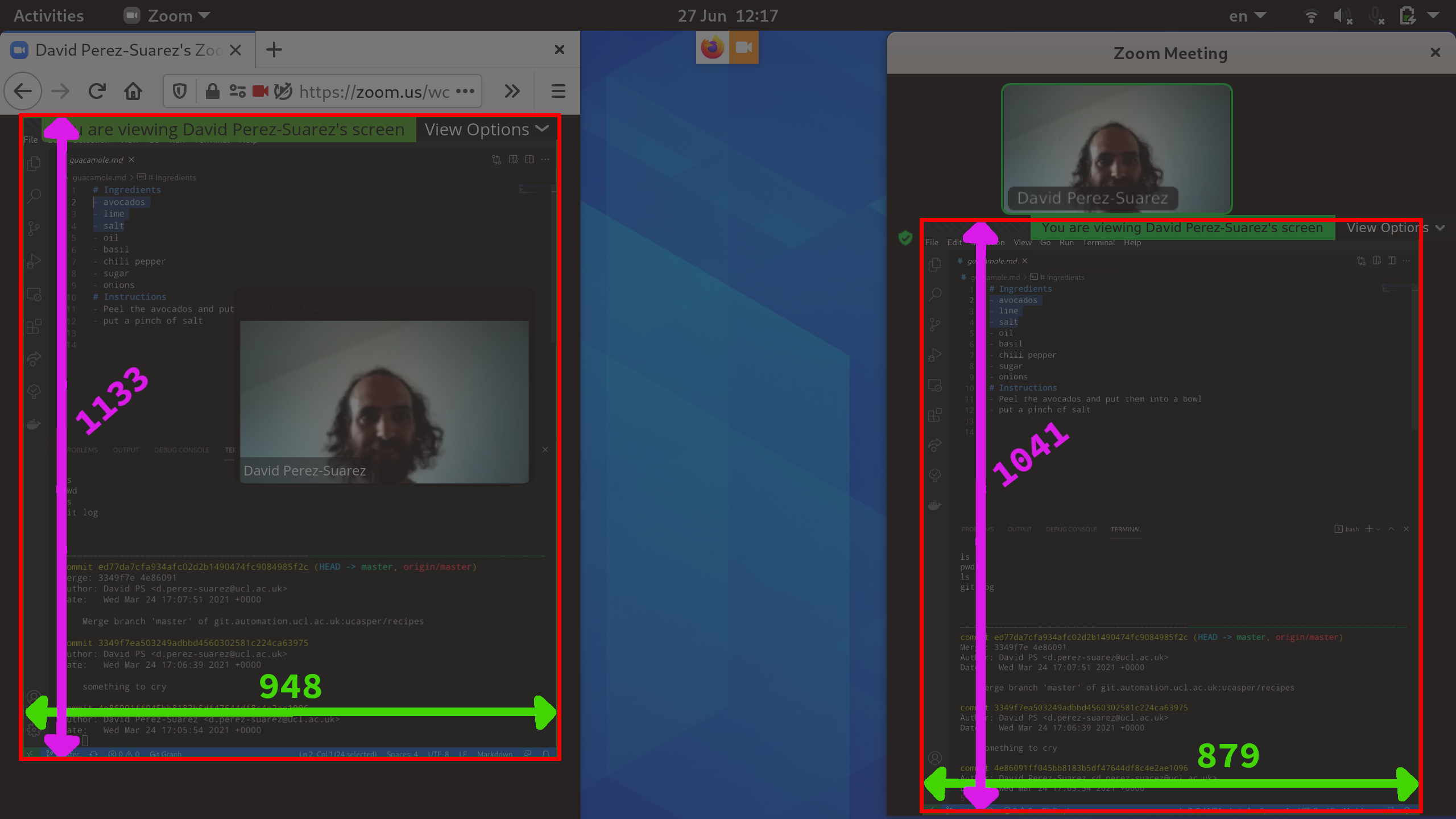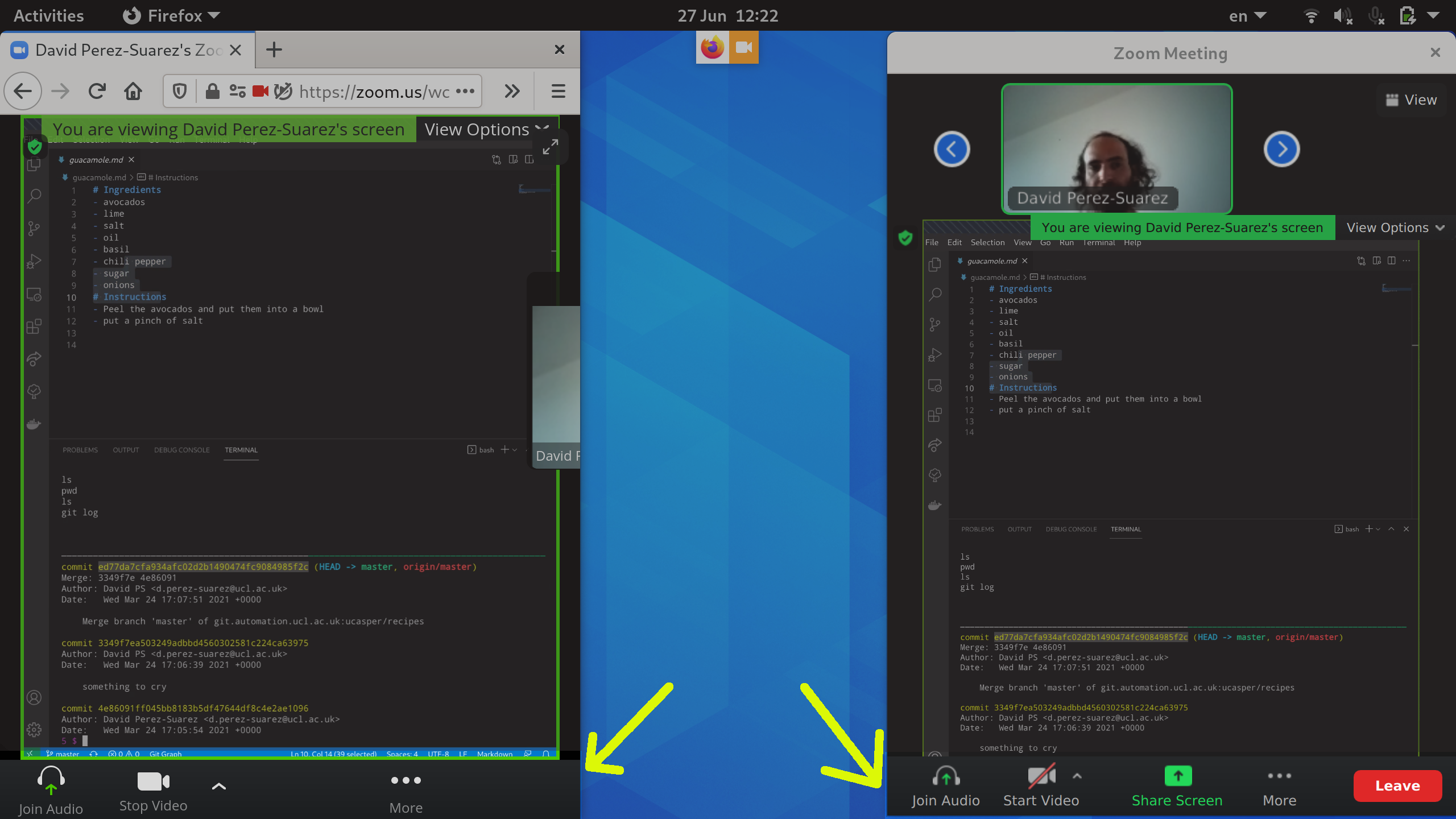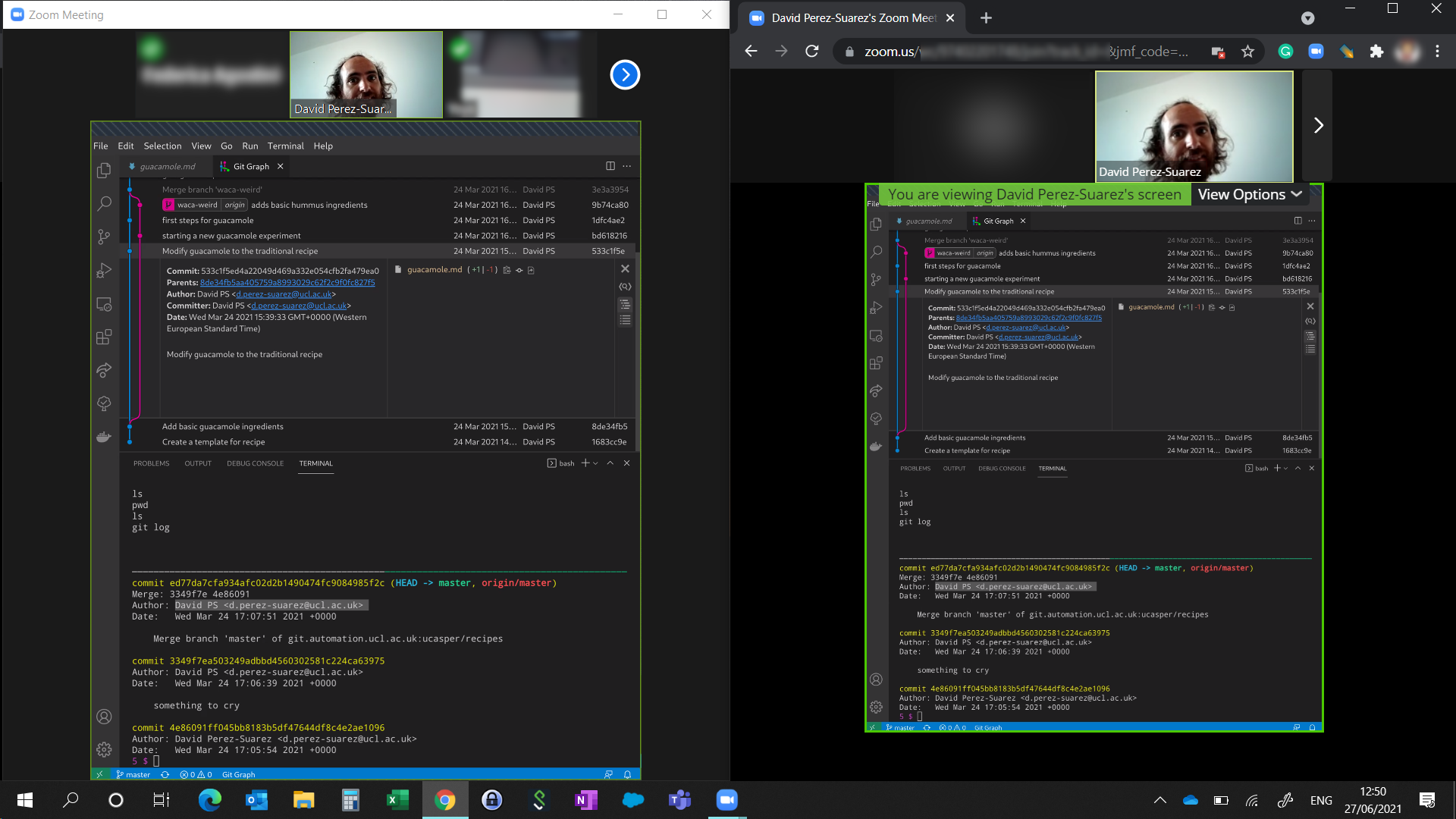Since I started teaching online I thought that a good approach to screen sharing was to only share half of my desktop. My reasoning being that this way I could keep the other half of my screen for my teaching notes and the chats (with the learners and other instructors), whereas the learners could use their other half for following along.
However, zoom is, by default, configured to switch to full-screen mode when someone is sharing the screen. It’s useful if you are watching some talk or lecture, but not that much if you need to code-along. As an instructor I didn’t realise this was a problem till a couple of weeks into one of the courses when a student gave us the following feedback:
the aspect ratio for Davids screen when he is screensharing means that anything he types is pretty much unreadable.
I believe this is related to that. Also, if the screen gets maximised and I’m sharing only half of the screen, they get half of the screen in the centre of their screen, leaving only one quarter on either side to work.
To get ready for my last workshop, and after multiple problems I’ve had wit zoom lately, I thought it would be better to test how my screen was seeing on different operative systems and using different clients (the desktop vs the browser client). Let’s see what I found.
In the sections below I’m testing by sharing some files and a terminal running on VS Code. The sharing was done by selecting only a portion of the screen option in the screen sharing menu in zoom.
What would you see when having a single screen?
Browser vs Zoom desktop app.
First I tried on Linux. On the left, we’ve got the web client on Firefox, on the right, the zoom app.

There are already some interesting differences.
-
The area! In the screenshot, the shared area shown by Firefox covers a 948x1133 px, whereas the desktop zoom app shows 879x1041. In Firefox you get 17% more than on the desktop.

Why is that? Well, because the video from the presenter is shown as a floating window, that you can move around (even outside of the view) as you please, whereas in Zoom you are stuck to either have it on the top or on the side. Ideally, I could control where to appear, but I’ve had other problems with that.
-
The zoom actions menu. It hides on both applications, however, in Firefox doesn’t hide any content, whereas it does so in the desktop app.

I find this very frustrating when you want to see something and the app keeps showing you a bar just because you hovered the mouse over. And by the time you calm down and stop moving the mouse, the thing you wanted to see is gone.
Focusing only on the shared screen, we should then prefer to use Firefox over the desktop app. You get more space and nothing hiding any of the important bits. However, if you need to also use the chat, then this may not be the best option. (We tend to not use the chat but a shared document instead). Additionally, you could even get more space hiding some bits from the firefox bar that you may not need.
How does this look in the Windows world?
In windows, the first browser I tried was Chrome, and to my surprised, it was different from Firefox on Linux. A popup appeared with the great news when you connect saying that you’ve got now a gallery/images view on Chrome! 🤦 That would have been awesome if it would let you choose which view you’d like. But it doesn’t!

With Firefox, however, you can still get the floating window for the webcams, but the area is not that different! The desktop app being ~5% larger. Though, the bottom menu bar will still hide part of the shared screen.
Multiple screens
If you’ve got more than one screen then you haven’t got many problems with space, right? However, there’s a nice feature of zoom that you can enable when using multiple screens, enabling dual monitors. This separates the zoom application into two windows, one for the bits being shared, and another where you can see the webcam of the participants.

This is the best of all the options! You get the zoom menu bar on the participants’ view, not hiding any of the content! Sadly, you need to have two screens… or do you? There’s some trickery we can do to our computers to make zoom believe that there are multiple screens and make this view available. However, this is not something I can ask my learners to set up before a class or a workshop. If you start zoom with a second screen connected, then I believe zoom keeps believing that you have that set up for the following calls. (Though it seems absurd that you find in such a situation, this trick has helped me many times where I can steal my girlfriend’s second monitor to start zoom and return it to her afterwards).
Final thoughts
First of all, I need to tell my students to disable the “enter full screen when a participant shares screen” option. This will at least let them place the window whenever they want.
Secondly, I need to test and re-test every time before teaching. In my last post, I explained why I had to use OBS. That worked fine for the teaching I needed to do in that time which didn’t require live-coding. However, when trying to use OBS to share only half of my screen I found a different problem. Since Zoom believes it’s your webcam that gets transmitted, Zoom keeps a webcam ratio on the screen, instead of what you normally get from a screen share, defeating the point of sharing half of the screen.
This time I went to “fix” zoom on my machine, and I did it by trying different versions you can install in Linux. The one that worked on my machine (Archlinux with Gnome over Wayland) was using flatpak. Or so I thought. I run all these tests, took lots of screenshots to share with my learners the optimal way to connect. During these tests I had noticed that my mouse pointer was not seen at all, but that was not new, I had to be more specific with my language. However, when I started teaching, I got one of the attendees saying “the screen is not changing”… 😱 Panic moment again! Zoom was not streaming my screen to the participants. Or well, it was, but only when I was hovering the mouse over the screen share bar that zoom creates. This meant I had to type and move the mouse every couple of seconds and made the flow of the workshop not as smooth as I would have liked it. Updating zoom again a couple of days later (from 5.6.1 to 5.7.xxx) seems to have fixed that issue on my latest tests.
If that was not enough, one of the attendees that tried to follow my indications to use Firefox on the university desktop couldn’t get the sound working, whereas the zoom app worked fine. Maybe I’ll design a flowchart before the next academic year starts so the students could get the most optimal setup with a less confusing set of instructions.
